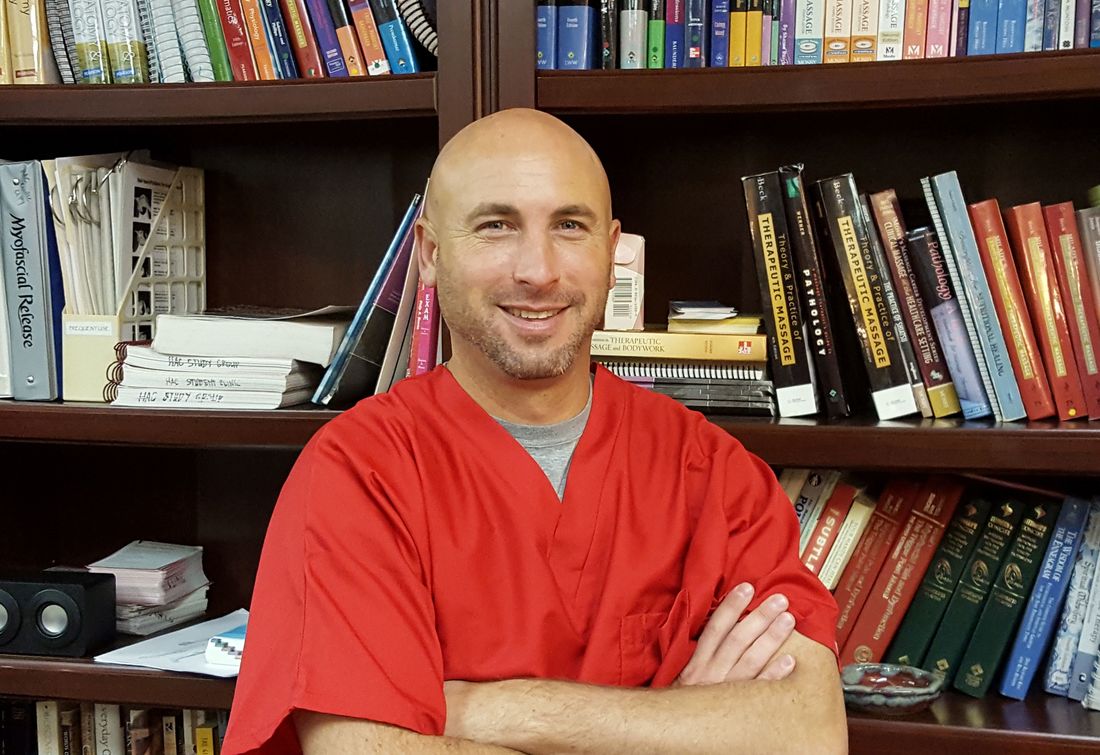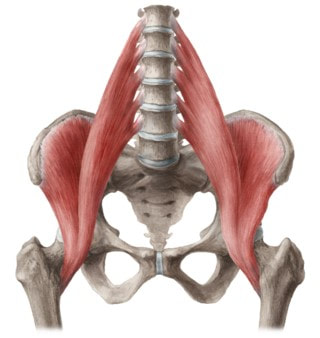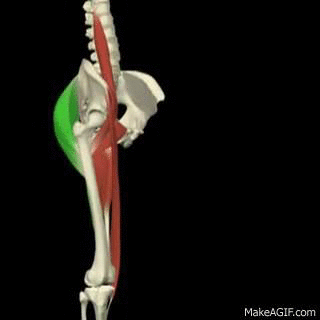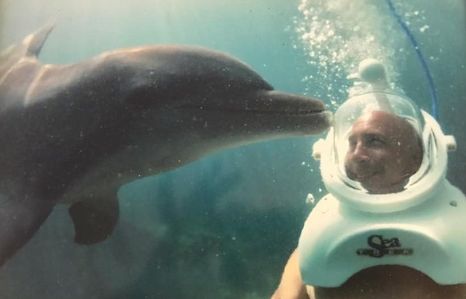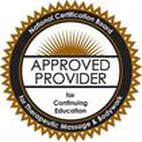
Is a Career in Massage Therapy Your Path? Take the Free Quiz
Dr. Dan Rovin's "Danatomy": An Exploration Of The Twenty-Five Muscles Of The Thigh. (Part 2)9/6/2017 This Week: ILIOPSOAS – THE GROUP OF TWO
Last month I introduced the sartorius muscle as the “group of one”. It was the first of six, really seven, groups of thigh muscles that I have, or will be blogging about. In keeping with counting order allow me to discuss the “group of two”, iliopsoas. Unlike the intentionally misnamed “group of one”, which is a singular muscle and should not be considered a group, “the group of two” is comprised of two distinct muscles. They are iliacus and psoas major. In approximately 40% of the population there is a psoas minor but it should never be considered a part of the iliopsoas since it inserts into the pubis and not into the femur. You may wonder why only 40% of people have a psoas minor. I couldn’t tell you if it is vestigial (lacking purpose) or an adaptation but I will always claim that if you have abdominal muscles, which you do, you don’t need a psoas minor to pull your pelvis when doing crunches and sit-ups…but it never hurts to have extra muscles helping to achieve a skeletal movement. This blog, however, is about iliopsoas and not about the absence or presence of a muscle. Everybody has iliopsoas muscles. In an effort to understand iliopsoas we should discuss their antagonist gluteus maximus. After all, they are in a way, your front side gluteus maximus muscles. Observing the gluteus maximus we see a strong muscle that originates from the ilium (posterior third of iliac crest and behind the posterior gluteal line) and spinal column (dorsolateral mass of the sacrum) and inserts into the femur (gluteal tuberosity except for the superficial fibers that blend into the iliotibial tract). The discussion of iliopsoas is the same as far as originating from the ilium (anterior iliac fossa) and vertebral column (ventral aspect of transverse processes and vertebral bodies L1-L5) and inserting into the femur (lesser trochanter). The gluteus maximus is your most important and most powerful muscle of walking, at least related to hip movement. That is why it is the girthiest (is that a word?) muscle in the entire body. It is thickest because you are exercising it every time you walk forward and, in essence, trying to roll the earth underneath you. You are not strong enough to roll the planet underneath you as you could a log on water. Instead, the weight of the earth wins out and the extension of your hip pushes your torso forward. Logic says that if you only walked backwards or sideways you would lack gluteal tone as the gluteus maximus wouldn’t get the regular workout of walking forward. I contend that if you only walk or run on a treadmill to improve gluteal strength you would not achieve the desired effect. On a treadmill, hip extension happens because of the movement of the floor underneath your planted foot which means the hip flexors lengthen long enough to allow the hip to fully extend before they contract and pull the hip forward to prepare for the next heel strike. Iliopsoas gets the better work out on a treadmill as the group is engaged eccentrically during the extension phase and concentrically during the flexion phase of the hip. Upon regular ground the gluteus maximus is relied on more than iliopsoas. Gluteus maximus contracts concentrically against the weight of your upper body and the contralateral lower extremity simultaneously, whereas, iliopsoas contracts concentrically against the weight of the ipsilateral lower extremity only. More simply stated, when walking, iliacus and psoas major pull the weight of their respective lower extremity (thigh, leg, foot, and toes) forward to the pelvis and spinal column. Gluteus maximus pulls against the weight of all of the body when walking except the extremity affixed to the ground. Assuming your lower extremities weigh as much as your torso, neck, head, and upper extremities, your gluteus maximus would work against 75% of your body weight leaving 25% for iliopsoas. So ultimately, gluteus maximus is stronger than iliopsoas and thus, you shouldn’t expect to see iliopsoas with the girth and size of gluteus maximus. Do not, however, think iliopsoas is a weak group of muscles. They are anything but weak. Iliacus is homologous to the subscapularis muscle. It is multipennate and appears to cover the entire anterior iliac fossa. The fibers of the muscle converge together and join with the lateral and posterior edges of psoas major before inserting into the lesser trochanter. I believe it to be more powerful than psoas major. Psoas major is longer than iliacus. Last month I explained how the length of sartorius makes it weak. Psoas, however, gets strength from its broad, thick, proximal onset. It starts at its origin notably wide and tapers as it joins with ilacus. As a pair, iliopsoas is the most powerful flexor of the hip. They get help from rectus femoris, sartorius, pectineus, and the adductors. A surprise to some is that gluteus minimus and gluteus medius can also help flex the hip and to a weaker degree, so can gracilis and tensor fascia latae. Earlier this month I had an opportunity to see dolphins up close and personal. Most people would be fascinated just by watching them swim, petting their snouts, and rubbing their bellies. I, however, was analyzing their muscles. They don’t have gluteal muscles, at least not like ours. They don’t walk. Why would they need them? I distinctly remember thinking they probably have really strong iliopsoas muscles. No sooner did I think it I realized one important thing; dolphins don’t have femurs.
That means dolphins don’t have iliopsoas muscles. In fact, their pelvis is vestigial. They get their power from the abdominal muscles that create the down stroke of their tails followed by the dorsal muscles that create an upstroke. But that didn’t stop me from thinking that if they did have psoas muscles (and we ate them) theirs would be very tough and not tender like that of a cow. Oh, did I forget to mention that a cow’s psoas major is its tenderloin, the cut of beef that filet mignon comes from? I would be remiss if I didn’t discuss the etymology of iliopsoas. Iliacus is named for being the muscle of the ilium. The ilium is the largest bone of the pelvis and one of three bones that fuse to form the os coxae. Ilium is Latin and translates to flank, or entrails, which is in reference to the abdomen and groin. Psoas is Greek for lumbar which is Latin for loin (a synonym in English of lower back). Could we eventually see psoas changed to lumborum and as such, start calling iliopsoas iliolumborum? I hope not. I really enjoy the silent ‘P’ of psoas. |
Healing Arts Center News
Keep up with what's happening at the Healing Arts Center.
Follow us on Social Media:Read the Fire Bowl School Newsletter:
Categories
All
|
*The Healing Arts Center is proudly accredited by the Accrediting Commission of Career Schools and Colleges (ACCSC) for the 600-hour massage therapy training certificate only. ACCSC does not accredit individual Master Track courses or CEU offerings separately for this or any institution.
Follow Us Online:
© Copyright, The Center For the Healing Arts, LLC, 2020
